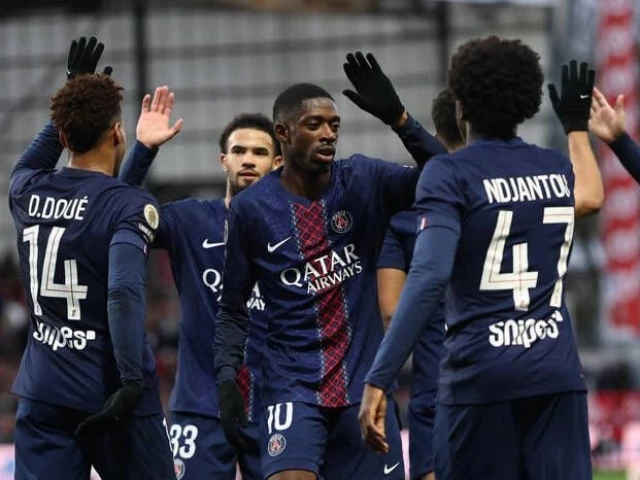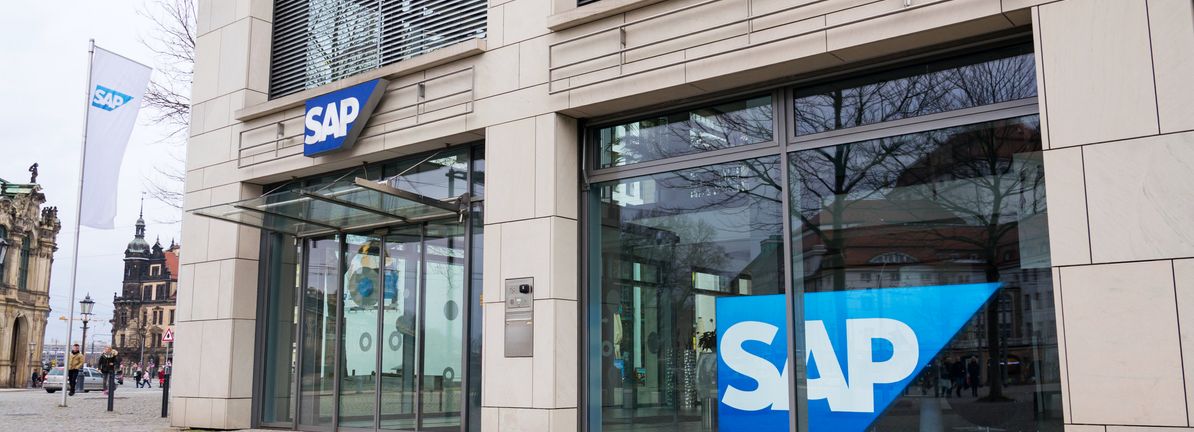Q2 – Norris sets the pace with Piastri seventh
After leading the way in Q1, Hadjar was amongst the first to head out on track as 15 minutes went on the clock for Q2. The Frenchman was soon joined by the rest of the pack, with all again running…

After leading the way in Q1, Hadjar was amongst the first to head out on track as 15 minutes went on the clock for Q2. The Frenchman was soon joined by the rest of the pack, with all again running…

Jasmine Sandhar,BBC Newsbeat and
Pete Allison,BBC Newsbeat
 Getty Images
Getty ImagesWhen Saki Yew stepped off stage at this year’s Manchester Pride, she felt “joyous”.
The former Drag Race UK queen…

Million-dollar longevity clinics, IV drips, personalised genome sequencing – the quest for a longer, healthier life often feels like a science fiction movie with an exclusive ticket price.

1
McLaren
4
Qualifying 3, fastest lap 1:15.586
2

Ferrari
16
Qualifying 3,…

Paris Saint-Germain won after two Ligue 1 stalemates as they beat…

In 2024, an estimated 40 million people were living with HIV. While 77 % were being treated, nine million were not. Despite progress, the HIV response faces growing challenges due to shifting funding and political uncertainty. The US, which…

Bokusgruppen (OM:BOKUS) reported robust earnings momentum, with profits climbing 58.9% in the recent period and net profit margins rising to 3% from 2.1% last year. Over the past five years, earnings have grown at an impressive 18.8% annual rate. However, looking forward, revenue is forecast to grow at a slightly slower pace than the wider Swedish market. The company’s current valuation looks attractive relative to industry benchmarks, but investors are keeping an eye on dividend sustainability as a minor risk factor.
See our full analysis for Bokusgruppen.
Now let’s set these headline results against the broader market narrative to see where the numbers confirm expectations and where they shake things up.
Curious how numbers become stories that shape markets? Explore Community Narratives
Earnings grew 58.9% in the latest period, a sharp acceleration compared to the already strong five-year average of 18.8% per year. This highlights an extraordinary uptick in profit momentum.
Signs of a strengthening core business challenge typical doubts about sustainability. Prevailing analysis points to sector-wide headwinds but also calls out Bokusgruppen’s better-than-average pace.
Net profit margin expanded to 3% from 2.1% last year, supporting the view that cost control and operational leverage are contributing directly to profit durability.
The step-up in profit growth outpaces both historic trends and recent sector peers. This underscores that company-specific execution, rather than just favorable market conditions, is a critical factor.
While revenue is expected to grow at 3.6% per year going forward, this is modestly slower than the Swedish market average forecast of 3.9% annually. This signals that top-line expansion isn’t matching the local benchmark.
Prevailing perspectives highlight this as a key area where Bokusgruppen’s performance could limit upside, especially if growth fails to keep up with competitors.
Even with robust bottom-line figures, a slower projected revenue pace places more pressure on margin improvements to continue fueling overall gains.
The gap against market growth expectations may restrict re-rating opportunities. Investors may look for both margin and revenue acceleration before awarding a higher valuation.
With a current price-to-earnings ratio of 20.6x, Bokusgruppen trades at a discount to industry peers (58.1x) and the European Specialty Retail average (21.2x). However, its share price of SEK 82.00 sits above the calculated DCF fair value of SEK 66.42.
This value gap supports the narrative that the stock looks attractive on a relative basis but may face pressure from valuation-conscious investors who focus on intrinsic worth.
The premium to DCF fair value is a clear signal that the market is already pricing in future earnings growth or competitive advantages, while the discount to peers strengthens the argument for continued interest from growth-focused buyers.
The tension between these valuation contexts could limit near-term re-rating unless Bokusgruppen delivers above-market revenue or profit growth to close the fair value gap.

SAP SE reported strong third quarter 2025 results, with cloud revenue rising 27% and total revenue reaching €9.08 billion, as management highlighted accelerating adoption of its Business Suite and AI-driven cloud offerings.
Significant public sector wins, including a €1 billion contract with the U.S. Army and new AI-powered solutions, contributed to upgraded full-year guidance and reinforced SAP’s position as a leader in enterprise cloud transformation.
We’ll examine how SAP’s robust Q3 cloud revenue growth and major contract wins could influence its investment narrative going forward.
The best AI stocks today may lie beyond giants like Nvidia and Microsoft. Find the next big opportunity with these 27 smaller AI-focused companies with strong growth potential through early-stage innovation in machine learning, automation, and data intelligence that could fund your retirement.
To be a shareholder in SAP, one needs to believe in its transition to a cloud-first enterprise software model and sustained growth in cloud and AI-driven services. The latest Q3 results, with 27% cloud revenue growth and a €1 billion U.S. Army contract, provide positive momentum for short-term catalysts like cloud bookings and reinforce the leadership narrative. However, the company’s confirmation that full-year cloud revenue will land at the lower end of guidance highlights persistent risks from elongated public sector sales cycles.
Among recent announcements, SAP’s completion of the SmartRecruiters acquisition supports cloud expansion efforts and addresses one of its biggest revenue and margin catalysts, broadening the portfolio and increasing the value of recurring cloud contracts. This acquisition not only enhances SAP’s HR cloud functionality but also adds further scale to its subscription-based offering, reinforcing cloud-led revenue catalysts in the wake of strong Q3 figures.
Yet, despite these growth signs, investors should be aware that pressure on sales cycles in sectors like the U.S. public sector could still…
Read the full narrative on SAP (it’s free!)
SAP’s outlook envisions €50.9 billion in revenue and €10.3 billion in earnings by 2028. This is based on analysts’ expectations of 12.3% annual revenue growth and a €3.8 billion increase in earnings from the current €6.5 billion.
Uncover how SAP’s forecasts yield a €287.60 fair value, a 23% upside to its current price.
Simply Wall St Community members provided 20 fair value estimates for SAP, ranging from €234.97 to €345 per share. While many see substantial upside, risks remain around the pace of cloud revenue growth and the impact of protracted enterprise purchasing cycles on future results, so you may want to consider other views before making a decision.

Ajinomoto (TSE:2802) shares have drawn fresh attention as investors revisit the company’s performance this month. While there has not been any single headline event, several market watchers are observing how its ongoing growth trends might influence future returns.
See our latest analysis for Ajinomoto.
Ajinomoto’s share price momentum has stayed positive, climbing nearly 33% year-to-date and maintaining a robust uptrend. With a striking 1-year total shareholder return of 51% and five-year returns above 330%, long-term investors have been rewarded as optimism builds around the company’s growth strategy.
If Ajinomoto’s steady climb has you thinking bigger, now is the perfect moment to explore fast growing stocks with high insider ownership.
But with shares hovering near their price targets after years of strong gains, investors may wonder if Ajinomoto is still trading below its true value or if the market has already factored in all the expected growth ahead.
Ajinomoto’s last close at ¥4,231 sits just below the narrative fair value estimate of ¥4,377. This marginal gap amplifies the debate over whether recent innovations and partnerships could unlock further upside, or if current expectations already reflect the company’s full earnings potential.
“Ongoing investment in R&D and human capital, particularly in Functional Materials and Bio-Pharma Services, is expected to yield differentiated, higher-value products (e.g., specialty amino acids, AI/PC/server-related materials), strengthening competitive moat and gradually improving net margins over the long term.”
Read the complete narrative.
Want to know exactly which breakthrough bets and financial projections are shaping this valuation? The “secret sauce” is a bold mix of future margin expansion, ambitious growth forecasts, and the expectation of a premium price tag usually reserved for market innovators. Find out what underpins this bullish vision if you are ready for a deep dive.
Result: Fair Value of ¥4,377 (UNDERVALUED)
Have a read of the narrative in full and understand what’s behind the forecasts.
However, persistent raw material cost inflation and weak demand in certain core markets could quickly derail Ajinomoto’s bullish recovery expectations.
Find out about the key risks to this Ajinomoto narrative.
While Ajinomoto looks slightly undervalued from a fair value perspective, its current price reflects a very high price-to-earnings ratio of 52.4 times. This is not just above the Japanese Food industry average of 16.4 times and its closest peers at 17.6 times, but also significantly exceeds the fair ratio of 33.8 times. This signals stretched expectations and higher valuation risk for investors. Is this optimism sustainable, or could it leave the stock vulnerable if growth falls short?

Alector (ALEC) recently reported that its experimental therapy latozinemab did not meet the main efficacy goal in a late-stage trial for frontotemporal dementia. As a result, multiple follow-up studies are being discontinued, and the company is reorganizing its operations.
See our latest analysis for Alector.
It has been a dramatic stretch for Alector’s stock. Following news of the Phase 3 trial setback and sweeping operational changes, the one-week share price return plunged by over 50%, and the one-month figure sits at -52.5%. Even before this, momentum had been fading; the 1-year total shareholder return is down 68%, highlighting ongoing challenges for both short- and long-term holders despite a small rebound in the most recent session.
If unexpected biotech moves get you thinking about where the next big story could emerge, this is a great moment to discover fast growing stocks with high insider ownership
With steep losses already reflected in Alector’s share price, the key question is whether the market has overreacted and created a bargain, or if the valuation now fairly accounts for fading prospects and future uncertainty.
Alector’s widely followed narrative suggests a fair value notably above the latest $1.50 close, which hints at market pessimism that may be overdone. The most influential argument highlights the importance of pivotal data still to come and the company’s unique approach, setting up a fascinating debate over potential upside versus recent setbacks.
Alector’s proprietary expertise and platform for blood-brain barrier delivery of large therapeutic molecules addresses a critical bottleneck in CNS drug development and enables pipeline programs targeting Alzheimer’s, Parkinson’s, and additional neurodegenerative diseases. This lays the groundwork for sustained long-term revenue growth and enhanced gross margins if these programs advance.
Read the complete narrative.
What is the secret ingredient inside this valuation? The narrative banks on aggressive revenue acceleration and a total earnings turnaround. Does the fair value truly reflect high expectations for scientific breakthroughs and blockbuster partnerships? Readers with an eye for bold forecasts will want to see the numbers driving this price call.
Result: Fair Value of $2.20 (UNDERVALUED)
Have a read of the narrative in full and understand what’s behind the forecasts.
However, if regulatory hurdles grow or development setbacks persist, confidence in Alector’s ambitious turnaround narrative could quickly begin to unravel.